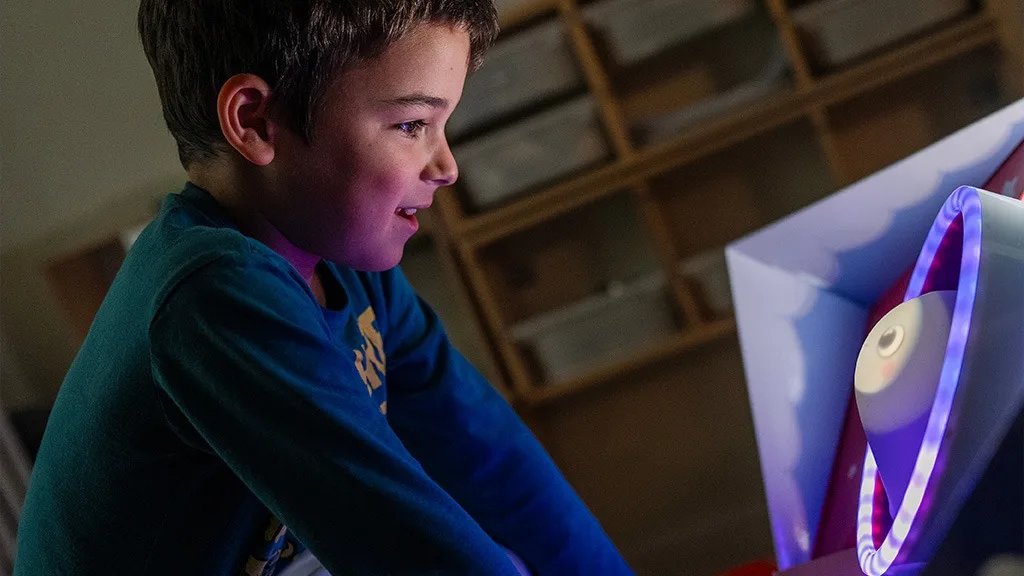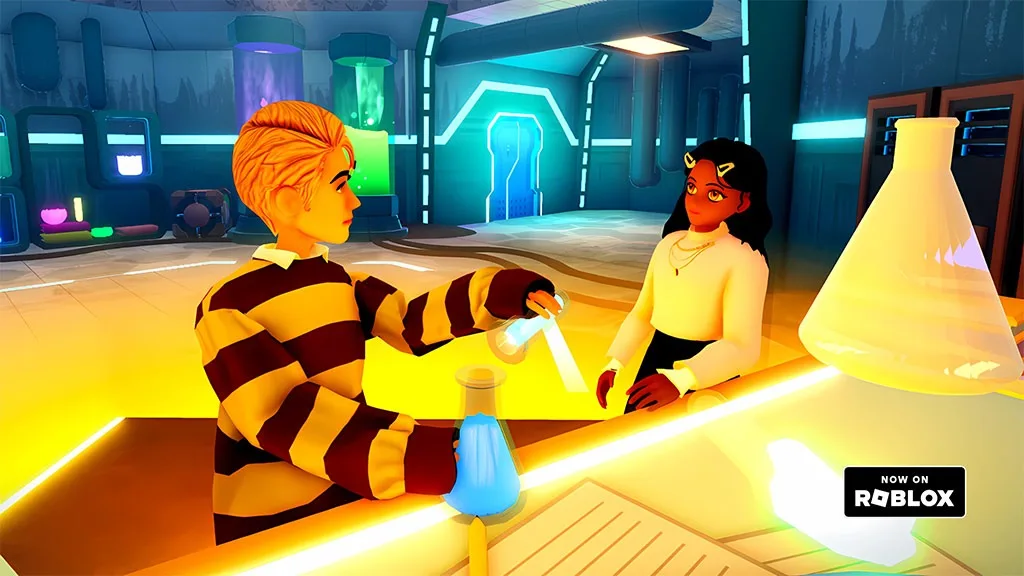Move Over M3GAN…
There is no doubt that technology has always been an essential force driving the toy industry. Innovation often comes from advancements in technology, and while the world today is fast-paced and constantly evolving, the emergence of artificial intelligence (AI) in the toy aisles is taking the meaning of play to a whole new level.
“The advent of AI in the toy industry marks a transformative era where toys are not just playthings but interactive learning companions,” says Marty Abrams, CEO of Mego Corp. “AI enables toys to personalize interactions, adapt to a child’s development stage, and even monitor educational progress. It transforms playtime into an immersive experience that blends entertainment with tailored educational content — fostering creativity, critical thinking, and problem-solving skills. Moreover, AI-driven toys can evolve with the child, ensuring longevity and sustained engagement.”
The advent of AI in the toy industry marks a transformative era where toys are not just playthings but interactive learning companions.
Mego’s 2XL Cobot (Collaborative Robot) is a smart, cloud-based, interactive robot that talks, listens, remembers, and learns, engaging both kids and adults alike. A successor to the 2-XL of the late 1970s — one of the first “smart toys” — it can create stories, converse about many subjects, and speak more than 30 languages fluently. 2XL even responds to questions and assists with homework, making education interactive and fun. “Overall, AI-driven toys have the capacity to blend education with play in an unprecedented way, making learning an enjoyable, dynamic, and highly individualized journey,” Abrams adds.
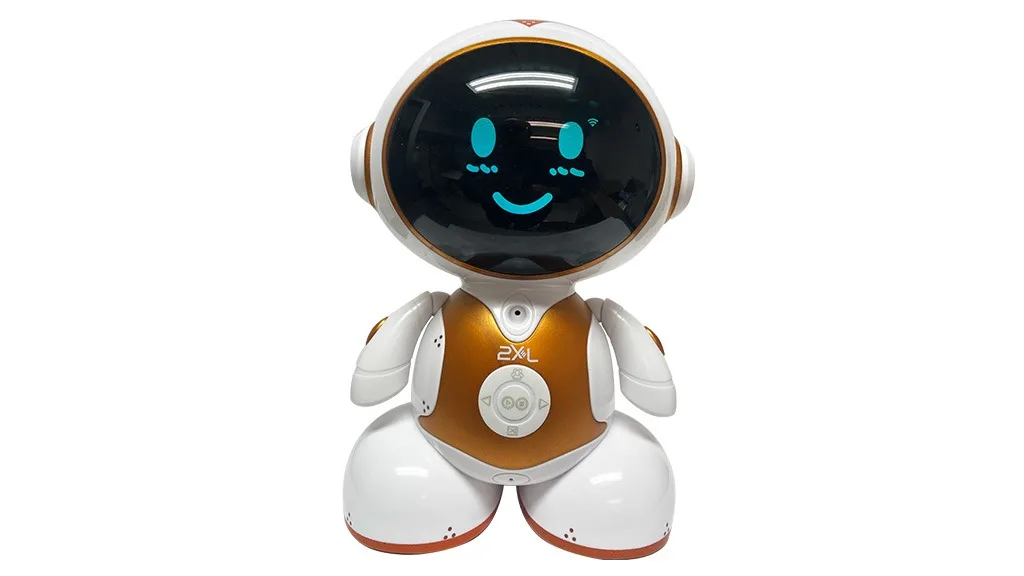
In the case of 2XL, the robot is powered by D1srupt1ve’s MAGICAL platform, AI that can observe which subjects spark enthusiasm in kids or which ones require more practice, and adjust its questions and information to challenge and support the child appropriately. It can also remember past interactions, creating a continuous, effective, and evolving educational journey. The toy will become more aligned with kids’ personal development over time and attuned to each child’s journey of discovery and growth.
Snorble is an interactive companion in the form of a fun animated character that uses AI and natural language processing to encourage healthy habits in kids. “After talking with parents and experts in childcare, we saw a clear path to creating a companion that would help children thrive,” says Ed Gershowitz, Executive Vice President, Snorble.
We see this as an opportunity to introduce a holistic approach that touches upon all aspects of imagination, play, health, and education — led by the most important subject matter expert: the parent.
Mike Rizkalla, Co-founder and CEO of Snorble, adds, “For our families, thriving is not about learning one skill or the ABCs. It’s about helping our little ones be the very best they can be. We see this as an opportunity to introduce a holistic approach that touches upon all aspects of imagination, play, health, and education — led by the most important subject matter expert: the parent.”
The parent-directed, child-led structure of Snorble invites parents or caregivers to curate the experience for their family. This approach and a continuous narrative that changes with the child over time give the product a longer life cycle in the home. “The truth is that because of the opportunity to expand the narrative and give a more contextual experience, every child can have a real connection as the device feels to be made specifically for them,” Rizkalla continues.
Snorble is an extension of the “village” (parents, grandparents, caregivers, teachers, etc.) that can help with bedtime and morning routines and encourage kids to complete tasks like brushing their teeth with positive reinforcement and a reward system. It also offers a variety of programs including relaxation activities like yoga or meditation, instructional games, music, and more.
“AI can be very useful in catering the same product to two very different end users,” says Lili DeSisto, Marketing Manager at Thames & Kosmos. “The availability of AI opens the door for toy manufacturers to develop products that offer highly customizable play experiences.”
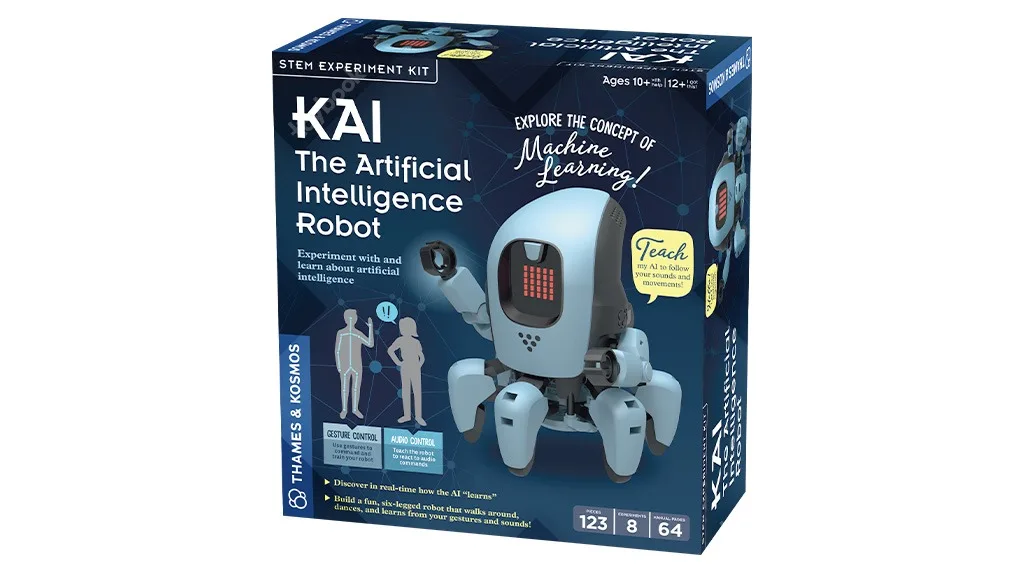
KAI from Thames & Kosmos is a buildable artificial intelligence robot. Kids first construct the six-legged robot from more than 100 pieces, then use the KAI Robotics app to assign movements or sounds to the robot’s different functions to teach it when and how to move. The robot refines its accuracy as it collects more data and users get a digestible, hands-on introduction to AI. The kit and included instruction manual expand upon the real-life applications of AI, providing a holistic understanding of advanced computing technology.
AI can also be used to elevate traditional gameplay experiences, as seen in Mattel’s Pictionary Vs. AI. In the game, players draw images of the words while AI tries to guess the word. Players earn points if the AI guesses their drawings correctly and can earn additional points if they predict correctly whether the AI will guess right or wrong. Integrating AI into classic games expands possibilities for kids to enjoy popular and beloved activities in a new way.
PRIORITIZING PRIVACY AND SAFETY
A key aspect of AI is machine learning, or the process by which computers use data to recognize patterns, learn, and make predictions. As with any new technology, privacy and safety concerns are a top priority. Last month, the Biden-Harris Administration issued an Executive Order regarding the use of AI to help harness its potential and benefits and mitigate the risks. The Order aims to establish new standards for safety and security, protect privacy, promote innovation and competition, and more.
In the toy industry, transparency is key, and manufacturers agree that they should ensure their products comply with international standards and regulations such as COPPA (Children’s Online Privacy Protection Act) and GDPR (General Data Protection Regulation).
“As an industry, it’s important that as much as we increase the use of AI in toys, we need to spend an equal amount of time educating both parents and kids about the concept of AI — what it is and how it works. We need to be sure we’re not just emphasizing all the cool things we can do with it,” DeSisto says.
2XL incorporates features such as encrypted data storage and transmission, parental controls for monitoring and limiting interactions, automatic updates to improve security features, and mechanisms to report and respond to any attempts at breaching content guardrails. The AI system within 2XL is designed to recognize and filter out inappropriate content, ensuring interactions remain kid-friendly. Additionally, anti-jailbreaking measures are used to prevent unauthorized modifications that could compromise safety or privacy.
Snorble uses a proprietary platform and does not use LLM (Large Language Models). Its stand-alone system runs directly on the product, giving minimum to no exposure to cloud-based technologies. It uses radar instead of cameras and only needs to connect to the internet to download firmware updates or to access content updates. Snorble performs the majority of its functions within the stand-alone system, and the rest is done through a mobile app.
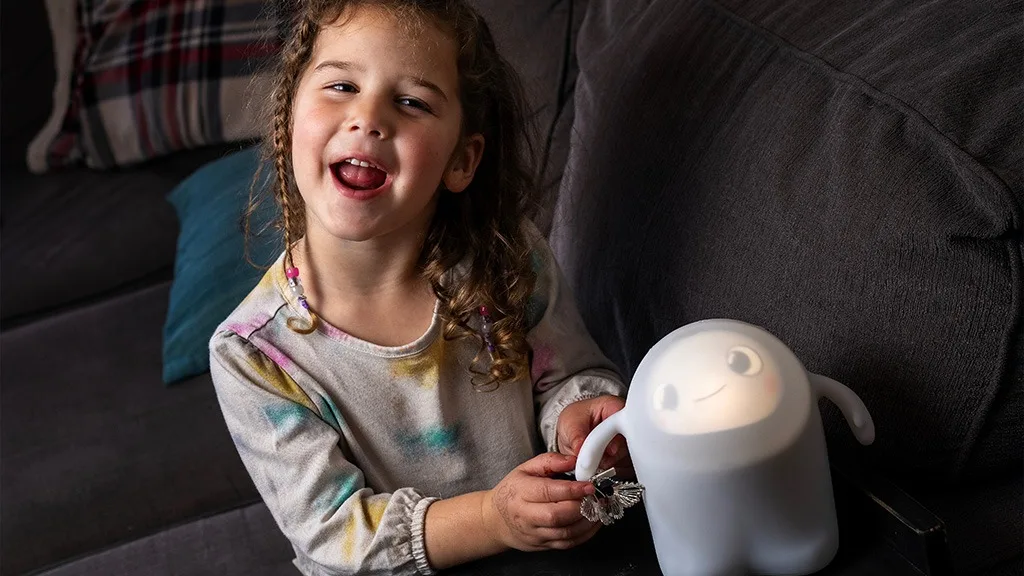
While toys like 2XL and Snorble have the potential to become a kid’s new best friend, and AI can assist kids with STEAM (science, technology, engineering, arts, math) and MESH (mental, emotional, social health), social interactions remain vital to a child’s development.
“Overall parents and children are seeking a joyful play experience — the best experiences are ‘play first’ experiences enhanced by technology instead of the other way around,” says Valerie Vacante, Vice President, Solutions Innovation, dentsu. “While AI can make interactions more engaging, it’s essential to maintain a balance between human-to-human interactions and human-to-AI interactions to support children’s social and emotional development. AI toys should complement, not replace, traditional play to promote physical and social development.”
Toymakers note there is a growing demand for advanced educational technology from both kids and parents. Contrive Datum Insights reports the Global Smart AI Toys market was valued at $12.1 billion in 2022, and is projected to reach $36.4 billion by 2030. Today’s kids have only known a digital world, and parents can use these kinds of toys as an opportunity to embrace technology and connect with their kids.
“Today’s digital-native children are more receptive to learning through technology that resonates with their engagement with interactive media. Parents, in turn, seek out educational tools that can provide a competitive edge for their children’s cognitive development and prepare them for a tech-centric future,” Abrams explains, noting that 2XL works with an app in which parents can stay up-to-date on their kids’ activities and conversations.
Dr. Elizabeth Adams, a clinical psychologist who specializes in child development, academic achievement, and social-emotional growth and Co-founder of Ello, an AI reading coach for kids, advises that developers exercise caution moving forward as the play experience, educational landscape, and AI technologies continue to evolve. “We should remember that technology is a tool, not a panacea. Developers should constantly seek feedback from teachers, parents, and students to improve their products, making sure AI enhances education without overshadowing the importance of traditional teaching methods,” she says. “It’s a collaborative effort between tech innovators, educators, and policymakers to make AI-driven education both effective and secure.”
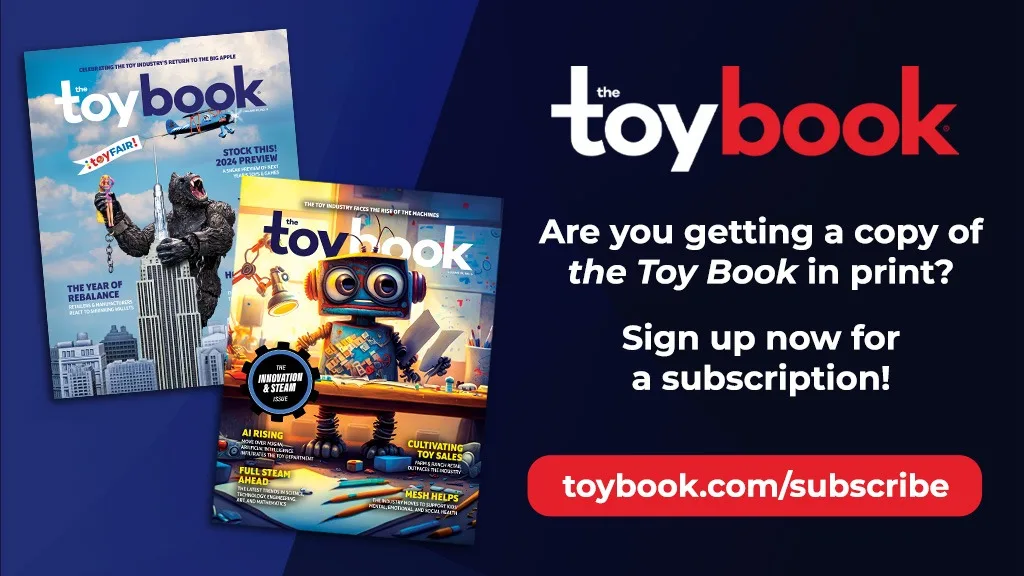
A version of this feature was originally published in the 2023 Innovation & STEAM issue of The Toy Book. Click here to read the full issue! Want to receive The Toy Book in print? Click here for subscription options!

